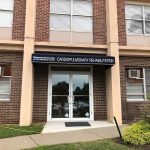Strokes can have wide-ranging effects on the individuals who experience them. The right types of therapies can make all the difference in the journey to recovery. Speech therapy after a stroke is highly advisable for those who have lost the ability to speak, listen, or communicate in other ways. Richmond University Medical Center in Staten Island, New York, provides award-winning care and rehabilitation services for patients who have experienced strokes. Here, the team explains the importance of seeking speech therapy as part of a comprehensive post-stroke care plan.
What Is a Stroke, and How Does It Impact Speech?
Strokes, among the leading causes of death or disability in the United States, take place when blood flow is blocked within the brain. There are two forms of a stroke, including:
- Ischemic stroke: This type occurs when there is a blockage or reduction in blood supply to part of the brain. This lack of blood flood causes brain tissue to die within minutes due to being deprived of oxygen and nutrients.
- Hemorrhagic stroke: This happens when a blood vessel bleeds within the brain due to bursting or leaking. This bleeding damages brain cells through increased pressure and a lack of oxygen and nutrients.
A stroke disrupts the complex process the brain undergoes to take in and respond to information. Someone who suffers a stroke may have trouble performing the right facial movements for speech. This may result in them producing speech that sounds slow, slurred, or weak. Patients may also struggle to read, write, or understand words after having a stroke.
While individual cases are unique, receiving immediate stroke treatment is critical for managing brain damage and other health risks. An effective post-stroke treatment, such as speech therapy, can help reduce the risks of long-term health impacts.
Forms of Post-Stroke Speech Therapy
Post-stroke recovery plans will vary depending on the individual and the severity of the after-effects. Speech therapy is just one aspect of an overall recovery regimen, and it may include exercises like the following:
Facial Exercises
Many pathologists teach patients facial exercises to perform at home. Tongue-stretching exercises increase the ability for the tongue to move independently, as individuals use their facial and mouth muscles to drink and speak. It is best to perform these facial exercises in front of a mirror to ensure they are being done properly.
One popular tongue exercise involves controlling and positioning it to move the proper way to produce clear speech. To perform this exercise, follow these steps:
- Open the mouth.
- Move the tongue to the left side of the mouth until it touches the left corner.
- Count to two.
- Move the tongue to the right side of the mouth until it touches the right corner.
- Count to two.
- Repeat the first five steps as directed.
This exercise can be replicated by pointing the tongue up towards the nose and down towards the chin, counting to two between movements and repeating as needed. Another tongue exercise is to stick the tongue out for two seconds and pull it back in for two seconds. A pathologist may also recommend practicing smiling and making kissing-faces to improve muscle control.
Singing Therapy
Pathologists may instruct stroke patients to work on a concept known as singing therapy. Singing is a function of the right side of the brain while speaking is a function on the left side. In some cases, this allows these patients an opportunity to regain their speaking ability through singing. Studies show singing therapy improves speech pathways, which is especially helpful for post-stroke patients who are not able to speak yet.
Games and Puzzles
Maintaining mental and physical activity is a critical component of stroke recovery. Word games and puzzles help improve comprehension, language/visual processing, and problem-solving skills. Activities, such as crossword puzzles, solitaire, or word searches, give a patient an outlet to train their mind to think in different ways and improve cognitive skills. Other word games may focus on the concept of phonology, the pattern of speech. A phonology game may involve a patient guessing the number of syllables within a given word, and then having a partner tell them if they guessed correctly or not.
Benefits of Speech Therapy After a Stroke
Patients who engage in speech therapy after a stroke have an opportunity to improve language, speech, swallowing, and vocal skills. Medical speech therapy professionals, called speech-language pathologists, focus on neuroplasticity, the process by which the brain rewires itself. They help patients overcome their post-stroke challenges by assessing and diagnosing any issues related to speech, voice, communication, and ability to swallow.
Pathologists work with patients and caregivers to develop a tailored treatment program, so patients can regain their communication skills as much as possible. The care team for a patient also works to ease any frustrations they face in their post-stroke lives.
Seek Stroke Care at Richmond University Medical Center
Speech therapy after a stroke offers patients an effective and hopeful path to regaining their communication skills. Reach out to the award-winning team at Richmond University Medical Center in Staten Island, NY, to create the ideal speech therapy plan after a stroke. Contact us today to schedule an appointment or to learn more about our rehabilitation services offered at our Comprehensive Rehabilitation Center.




